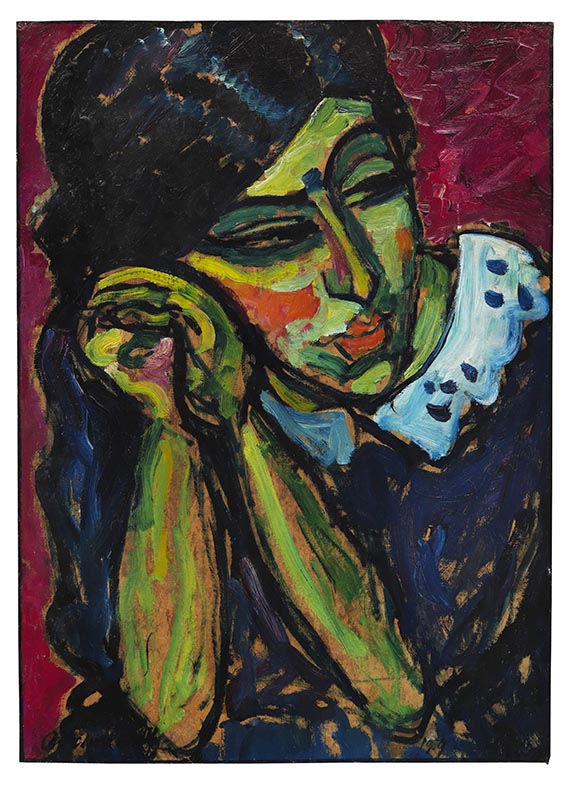Dictionary


Neo-dadism
The Neo-dada movement (Neo-dadism) developed during the 1950s and 60s as a reaction against abstract, gestural styles based in the unconscious, such as Informel, Tachism, and Action Painting. Neo-dadism was meant to remove the boundaries between art and life. In order to express this aim clearly in art, artists integrated everyday found objects into their work. This approach, which was influenced by Marcel Duchamp’s ready-mades, was applied to diverse artistic mediums, and resulted in new artistic forms of expression such as Combine, Environment, and Accumulation paintings as well as "picture-traps" (tableau-piège).
Robert Rauschenberg (1925-2008), for example, combined painted elements with diverse found objects, such as car tyres, furniture and photos, thus opening up broad spaces of association. The movement took hold in France in the late 1950s, where it had a significant impact, and was known as Nouveau Réalisme. Neo-dadaism also had a decided influence on Pop art, and its immediate predecessor was referred to as New Realism. The frequent use of the terms Neo-dada, Nouveau Réalisme, and New Realism in the same context, meant that the protagonists of these styles constituted a small group. This included Arman, Jim Dine, Allan Kaprow, Jasper Johns and Tinguely.
One particular genre to emerge from Neo-Dadaism was the Happening. This form of Action art was characterised by its planned and improvised events, which involved both the artists and the public. Its theoretical basis was conceived by the composer John Cage (1912-92), who favoured the inclusion of the public in artistic activities. His piece "4'33" (first performed in 1952), during which Cage sat on stage at a piano for 4 minutes and 33 seconds without playing a single note, was possibly the first Happening, as the work focussed on the different, unpredictable reactions of the public.
The number of new artistic approaches made it clear that the artists of Neo-dada were attempting to create new forms of expression. The socio-critical elements that had partially defined Dadaism, took a less central role here, with a concrete focus on artworks being pushed to the fore instead.
The Neo-dada movement (Neo-dadism) developed during the 1950s and 60s as a reaction against abstract, gestural styles based in the unconscious, such as Informel, Tachism, and Action Painting. Neo-dadism was meant to remove the boundaries between art and life. In order to express this aim clearly in art, artists integrated everyday found objects into their work. This approach, which was influenced by Marcel Duchamp’s ready-mades, was applied to diverse artistic mediums, and resulted in new artistic forms of expression such as Combine, Environment, and Accumulation paintings as well as "picture-traps" (tableau-piège).
Robert Rauschenberg (1925-2008), for example, combined painted elements with diverse found objects, such as car tyres, furniture and photos, thus opening up broad spaces of association. The movement took hold in France in the late 1950s, where it had a significant impact, and was known as Nouveau Réalisme. Neo-dadaism also had a decided influence on Pop art, and its immediate predecessor was referred to as New Realism. The frequent use of the terms Neo-dada, Nouveau Réalisme, and New Realism in the same context, meant that the protagonists of these styles constituted a small group. This included Arman, Jim Dine, Allan Kaprow, Jasper Johns and Tinguely.
One particular genre to emerge from Neo-Dadaism was the Happening. This form of Action art was characterised by its planned and improvised events, which involved both the artists and the public. Its theoretical basis was conceived by the composer John Cage (1912-92), who favoured the inclusion of the public in artistic activities. His piece "4'33" (first performed in 1952), during which Cage sat on stage at a piano for 4 minutes and 33 seconds without playing a single note, was possibly the first Happening, as the work focussed on the different, unpredictable reactions of the public.
The number of new artistic approaches made it clear that the artists of Neo-dada were attempting to create new forms of expression. The socio-critical elements that had partially defined Dadaism, took a less central role here, with a concrete focus on artworks being pushed to the fore instead.
Offers




